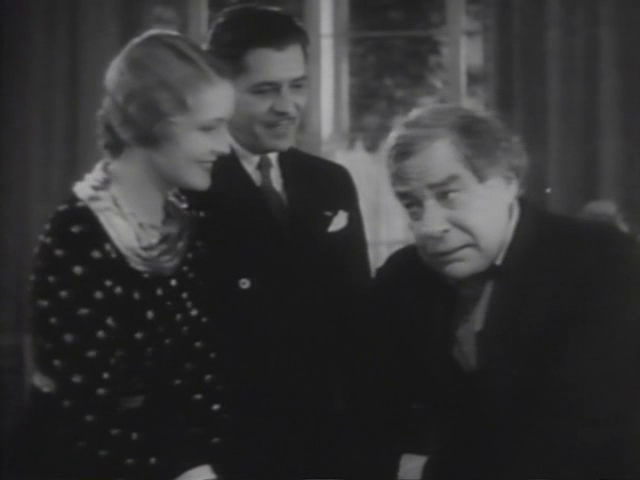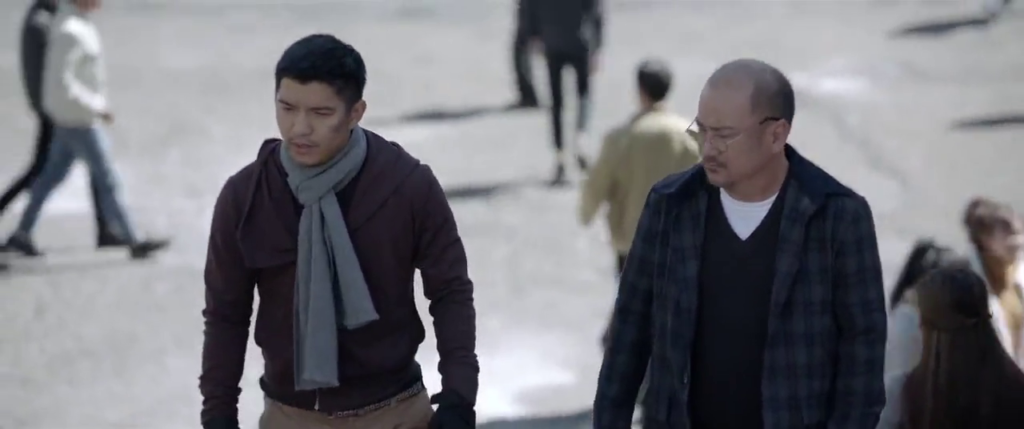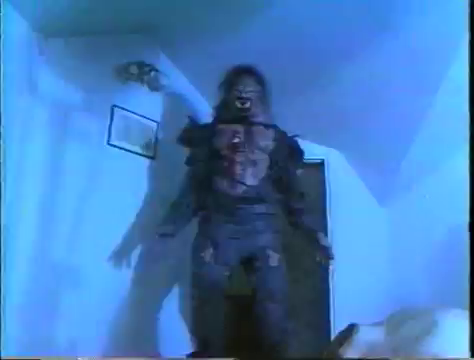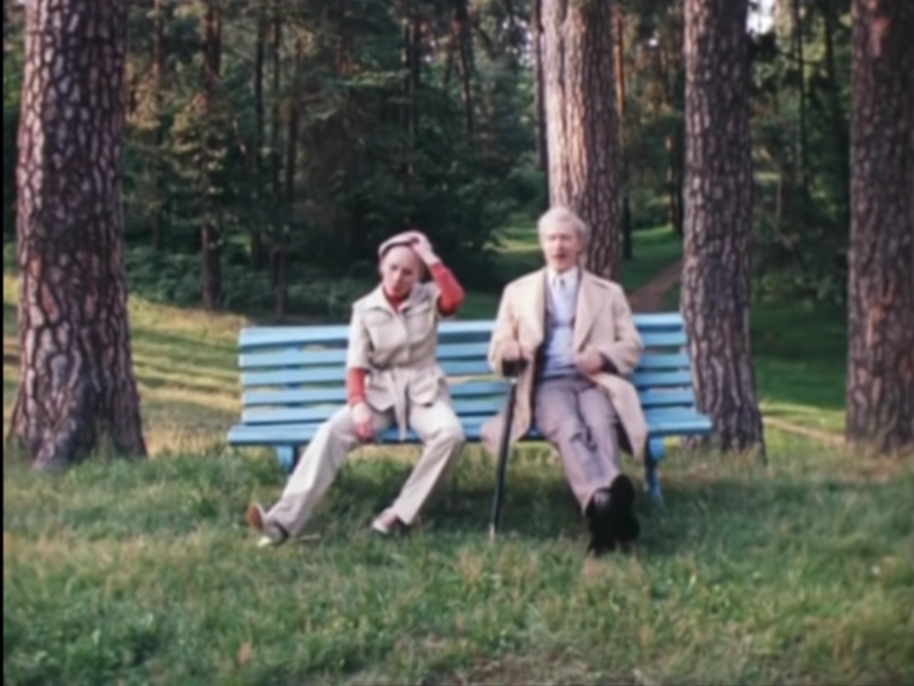-
#521 – 6 Hours to Live (1932)










6 Hours to Live (1932)
Film review #521
Director:
SYNOPSIS: World diplomats have convened at a special assembly to agree on a new global trade deal that requires unanimous approval from all countries. The only country that is opposed to it is Silveria, whose representative Paul Onslow believes it is only his country which will suffer form it. When Paul is murdered, Professor Otto Bauer uses his experimental invention to bring him back to life, so Paul can identify his murderer and be present at the final vote of the trade deal. However, the experiment only allows him to live six more hours, so he must wrap up all his business in that time…
THOUGHTS/ANALYSIS: 6 Hours to Live is a 1932 drama/sci-fi film, based on the story “Auf weidersehen” by Morton Barteaux. The film centres around a meeting of representatives from every country in the world, as they have convened to agree on a new global trade deal. The deal requires unanimous approval from every country, and the only country refusing to sign is Silveria, represented by Captain Paul Onslow, who believes the deal is bad for his country. This, naturally, has made him many enemies, and an attempt on his life is made after he leaves the conference. While he is in hiding, he realises he is in love with Baroness Valerie von Sturm, who his friend Karl Kranz is in love with, setting up a love triangle of sorts. Unfortunately, Onslow is killed in another attempt on his life, but Professor Otto Bauer’s latest experiment is able to bring him back to life. Unfortunately, it can only do so once for six hours, so Onslow has to find his murderer, deal with his affairs, and go to vote on the trade deal all before he dies for the second and final time. The story is primarily a drama; partly political, partly romance, and as such, there is a lot of dialogue to get through, and many of the scenes are just talking. A lot seems to happen to Onslow in one day, with him realising he is love, having two attempts on his life, and having to vote on this trade deal: with all these things going on, you’d think the film would be packed full of things, but as mentioned, the talking really takes over the majority of the scenes. I feel like more could have been done to set the scene of the film: the politics of this trade deal are left really unexplored, and we don’t know the details, and we are left to experience what feels like an entire relationship between Onslow and the Baroness in the span of one day. It’s easy to pick up and understand, but some exposition would have helped, like why the fictional country of Silveria is the only country in the world not to benefit from this supposed deal, and why he is holding out against it; since the representative who would fill in for him if he was absent also seems to want to vote for it. Him being against everyone else almost makes him seem like a villain, as we have no real knowledge of his motivations, over than “love of his country.” which could mean anything.
So when Onslow is brought back to life for six hours, it makes things a bit more interesting: he has to confront his murderer, vote against the treaty, and deal with his personal affairs all before his time runs out. Given only that a few people know of what has happened, he is able to mostly carry on like nothing has happened, and uses that to end his relationship with the Baroness and to force her to move on, as she is unaware that he is about to die (again), and that will be easier for her to accept. While you might think that returning from the dead would be a shocking and harrowing experience knowing you’re about to die again, Onslow is very serene and tranquil about the whole thing, and his “experience” of death has left him unafraid of what is to come. Instead of hurrying about, he revisits some people he met during the day, to comfort them and aid their troubles. He becomes almost an angelic figure, and I think the leaving of many things ambiguous is intentional to give it that mysterious feel and to keep the mystery of death intact. It almost feels like Onslow is meant to have a change of character when he was revived into this caring, empathic individual, but his personality was more or less like that to begin with, which doesn’t have the impact of something like Ebenzer Scrooge’s change of heart in “A Christmas Carol.” while the premise is interesting, it eventually falls into a very typical message of “science not going too far, and that some things should be left to God.” which crops up a lot in films of this era. Also, the whole reveal of the murderer at the end is anticlimactic, as it turns out to be someone who was only briefly seen at the start of the film, and plays no part whatsoever in anything. The scene where Onslow visits a prostitute to comfort her is a good one with some uplifting and genuine dialogue, but on the whole it is a very mixed bag.
Overall, 6 Hours to Live has an interesting premise, and provides some dramatic scenes, but some parts (particularly the romance and the dichotomy of science vs God) feels very much of it’s time. The acting carries the drama very well for the most part, but being very dialogue-heavy, it is not going to appeal to everyone. there’s definitely areas to improve in the film, but it still has some good points that keep the film together.
-
#520 – Lôi Báo (2017)










Lôi Báo (2017)
Film review #520
Director: Victor Vu
SYNOPSIS: Tam is a comic book artist who is working to finish his next big superhero project. His work has left him neglecting his health, and when he finally visits a doctor about a cough, he discovers he has terminal lung cancer. Tam visits a family friend, uncle Ma, who reveals that he has been working on a secret project to transplant heads onto other bodies. Although initially reluctant, Tam eventually agrees to undergo the procedure, using a body that Ma found in the woods. The operation is successful, but it seems to have come with a side effect: he has acquired lightning-fast reaction times, fighting skills and super strength, making him a real-life superhero. however, these newfound powers begin to cause trouble for himself and his family, and the attention of a criminal gang…
THOUGHTS/ANALYSIS: Lôi Báo is a 2017 science-fiction superhero film. The film centres around Tam, who is a comic artist working on his next big superhero project. He has been neglecting his health though, and when he goes to a doctor, he finds the persistent cough he has is actually terminal lung cancer. Family friend Uncle Ma reveals he has been working in secret on head transplants, and that he could save Tam’s life by transplanting his head onto another body. Tam is initially reluctant, but eventually agrees, and using a body the two find in a forest, Tam successfully undergoes the procedure. However, this seems to have the side-effect of giving Tam super powers, turning him into a real-life super hero, but this also comes with it’s downsides, as his new body has a bit of a life of it’s own, putting a strain on Tam’s relationship with his family and others. The film is a first attempt by the Vietnamese film industry at a superhero blockbuster film in the style of the Marvel/DC films, and it has a lot of the plot staples assembled. The main character is fleshed out in terms of his relationships and what he is going through, but it often feels like everything that goes on around him is just a mashup of superhero tropes without developing into anything really unique. When the film tries to tie everything together in the third act, it ties everything together: every character and disparate thing is revealed to be a part of some big plan and criminal organisation. Even in this, it just feels like everything is just lumped together, and gives the film no spontaneity. The twists that the film presents are fairly predictable, leaving very little room for the film to actually do anything purposeful.
The tone for the film is very odd: at some points it gets very dark, such as when Tam finds out he is dying, and attempts to kill himself. Other times it tries to be light and a bit silly, in particular with Tam’s young son, whose jokes about his own obesity don’t really hit the mark, and don’t really apply to anything. Tam’s relationship with his wife provides a high source of drama, particularly when his new body was previously involved with another woman who he meets, forming a love triangle, but even this is very surface level, and plays out exactly as you’d expect. With regards to Tam’s superpowers, they are also very inconsistent: he has faster reaction times, but also sometimes super strength as well, and how he actually got his new powers from his body is also vaguely explained.
Where the film does excel in it’s action sequences: the fist fighting is nicely choreographed and has some silly, but very high energy fights and stunts, which are fun to watch; it’s just a shame there’s so few of them. On the special effects side, the CGI isn’t particularly great, which drags the film down again, but when it just does some good old-fashioned martial arts, it’s alright. Overall though, Lôi Báo is a fairly lacklustre superhero film that takes many superhero tropes and fails to innovate or join them together in a stand-out central character. There’s a effort to fit a lot of story and a myriad of drama in here, but though it tries to connect everything together, does so in a way that is predictable and isn’t particularly satisfying.
-
#519 – Rawhead Rex (1986)










Rawhead Rex (1986)
Film review #519
Director: George Pavlou
SYNOPSIS: Howard Hallenbeck has taken his family on a trip to rural Ireland to do some research for a new book about the pagan deities of the area. Unfortunately, while he is there, the very kind of monster he is researching is released from it’s prison, and goes on a murderous killing spree. It becomes a race against time to stop the monster before everyone in the small town is slaughtered…
THOUGHTS/ANALYSIS: Rawhead Rex is a 1986 horror film, based on the short story of the same name by Clive Barker. The story centres around Howard Hallenbeck, who is visiting a rural town in Ireland with his wife and two children to research ancient folklore there for a new book he is writing. If this sounds like the opening plot to countless horror films, then you are spot on. you can also extend this to the rest of the film, as the whole experience feels very familiar and formulaic. Basically, an ancient demon is released from it’s prison and starts killing people in the village, leaving the authorities and the main cast to figure out what is going on. The plot unfolds very predictably: the monster kills, the cast try and figure out what goes on, and there’s very few surprises. Most of the kills are characters that haven’t been established or introduced properly, so there’s little investment in what happens to them. The lore behind the monster is never gone into in any real detail, and the occasional bit of gore and one brief bit of nudity just don’t leave any impact, nor do they escalate or build towards anything. The film feels like it has the fundamental building blocks, but never builds upo0n them, nor draws them together.
The monster, Rawhead, is based on a fictitious monster of the same name, but apart from said name, there doesn’t seem to be any real connection between the two. As mentioned, there could have been a lot more done with building the lore and have it impact the plot, but it essentially boils down to a mixture of paganism vs Christianity that offers little insight into either. Rawhead’s design is probably the thing that will ultimately make a viewer not take this film seriously: it is a pretty silly rubber mask which no real prosthetics or moving parts, and it never seems convincing. It also never seems too threatening either, since no one ever really has a chance to fight it, and just surprises people who can’t fight back, so we can’t really gauge it’s strength and ferocity. This is also true in the ending, in which the monster is simply resealed by a stone…thing, and the big twist is that a woman needed to use it (?), resulting in a climax which is just a bunch of CG chain things flying about and slowly imprisoning the monster. Again, there’s no real face off with the monster, so we don’t get a sense of it’s power and why we should fear it.
Other than the bare plot and monster design, the acting is for the most part fine, but there are a number of slip-ups, particularly with the accents, which you will undoubtedly notice at least once or twice. Apart from that, everything else is fine, just bland and unoriginal. Clive Barker, the writer of the original short story and the screenplay version, did not like the outcome of the film (unsurprisingly), and so took more control over the next film he wrote: which was the very successful Hellraiser. If you’re interested in Barker’s filmography, maybe you could give this a watch, but it has no other distinguishing features to mention.
-
#518 – The Adventures of Electronic (1979)










The Adventures of Electronic (1979)
Film review #518
Director: Konstantin Bromberg
SYNOPSIS: Professor Gromov has constructed a life-like robot boy named Electronic, based on the image of a schoolboy named Sergey. Electronic has the dream of becoming a real human boy, and when the Professor forbids him from interacting with the outside world, he escapes and runs into his double. Sergey has the idea of having them swap places, using Electronic’s super intelligence and strength to excel at school. meanwhile a criminal gang is spying on Electronic, with the aim of kidnapping him to use in a series of high-value heists…
THOUGHTS/ANALYSIS: The Adventures of Electronic is a 1979 three-part miniseries from the Soviet union. The story starts off introducing Electronic, a boy who is a robot created by Professsor Gromov to look human, and Sergey the human boy who Electronic’s appearance copies (who appeared on a magazine cover). The two eventually run into each other, and have the idea to swap places, so that Electronic can excel in Sergey’s classes at school, and Electronic is given the chance to live as a human; and naturally, hijinks ensue. The story is fairly obviously a combination of Pinocchio and The Parent Trap, although I’m not sure how accessible either of these were available in the Soviet union in 1979. Nevertheless, the story is simple to follow, and paces itself fairly well, with different things going on across the three different episodes of the series. Being aimed at children, there’s very mild threats and danger, but it’s pretty harmless. The series focuses more on humour, adventure, and the occasional musical number, and I imagine it would have been a fun and entertaining adventure for kids at the time. The story doesn’t really explore the range of potential of it’s set up, and often feels like a re-tread of the aforementioned Pinocchio and The Parent Trap, but you don’t really need to be groundbreaking for these types of films/series. The pacing is pretty solid, the characters develop at an even pace throughout, and there’s new elements added in as it goes along to maintain interest, so it does everything it needs to.
While Sergey and Electronic are up to their shenanigans, an international crime ring has been spying on Professor Gromov and, learning of Electronic’s existence, their boss plans to kidnap him to use his abilities to pull off a huge heist. As mentioned, the villains and danger isn’t too threatening as the series is made for kids, but it adds a little excitement to things. Apart from Sergey and Electronic (played by actual twins, but their voices are dubbed by different people), the rest of the cast play a minor role, but their appearance keep scenes energetic and busy, such as the gang of kids that Sergey and Electronic hang about with, the various teachers, and even a dog that joins the kids eventually. The familiar scenes of the school and the kid’s clubhouse also root the film in a very particular setting that the cast’s adventures revolve around, and makes a nice core along with the characters that interacts with the changing elements of the story, creating a nice balance.
The series was apparently very popular when it was released, and I think it’s easy to see why: it follows some tried-and-tested formulas story-wise, and also it’s produced fairly well, with solid camerawork and performances all round. It’s difficult to find too much wrong with it, since it’s aimed at a younger audience and is not intending to be groundbreaking. Overall, The Adventures of Electronic is an entertaining watch that hits the right notes, but is definitely something that would not stand the test of time, being firmly rooted in the time and place it was filmed. Some elements of the story are fairly timeless, but nothing original is added to make it worth a contemporary viewing.
